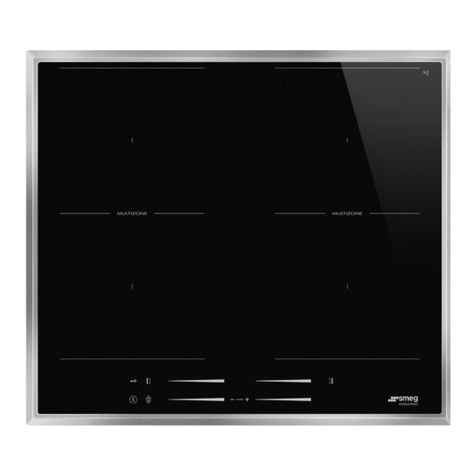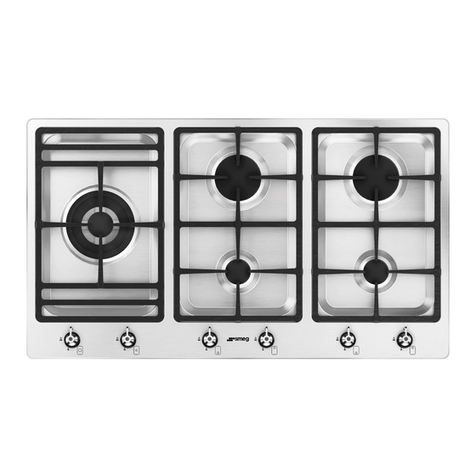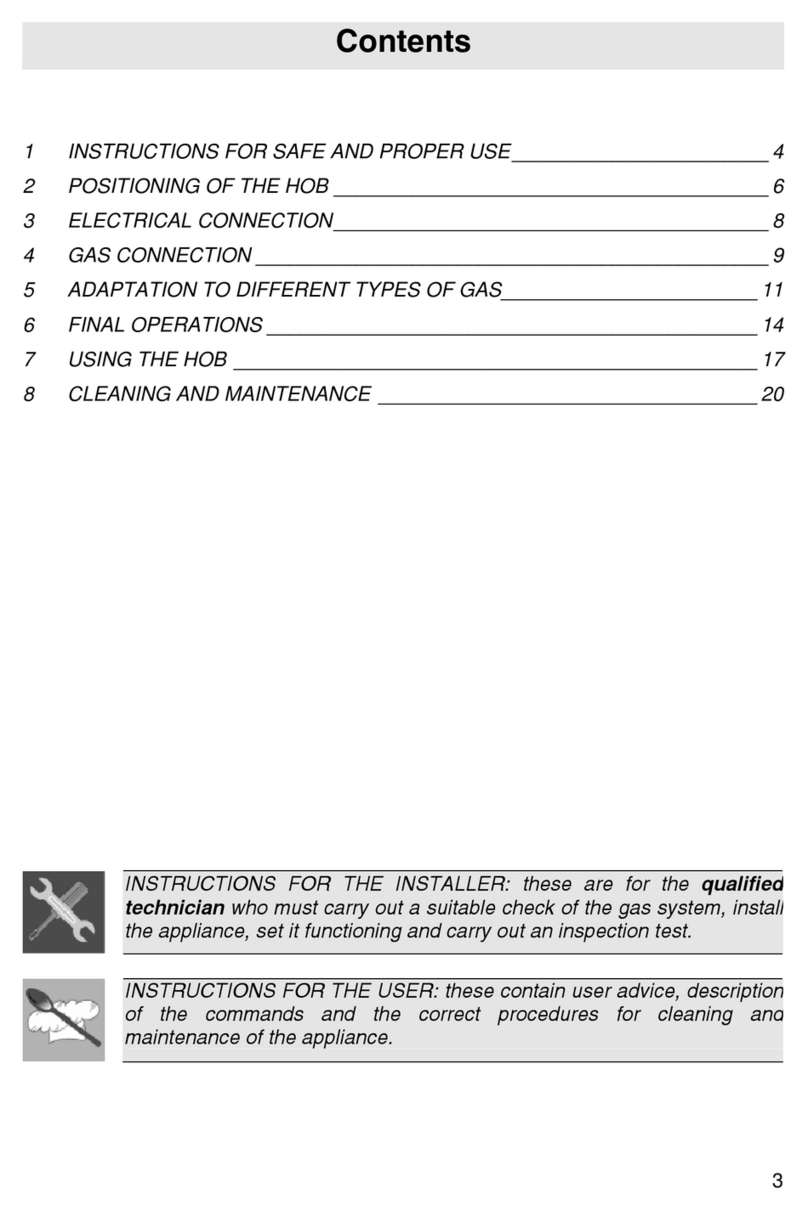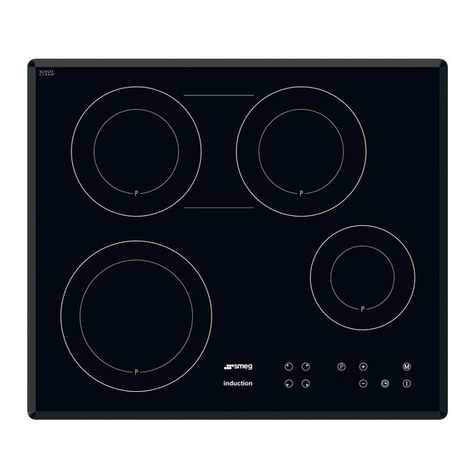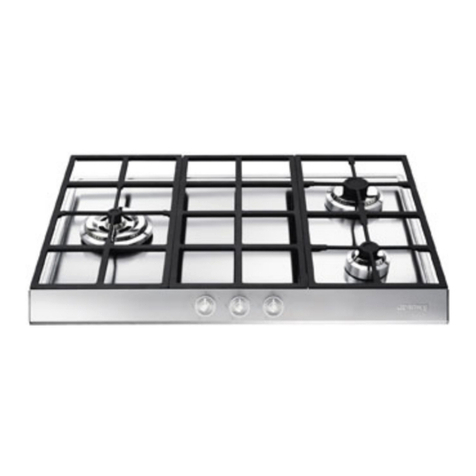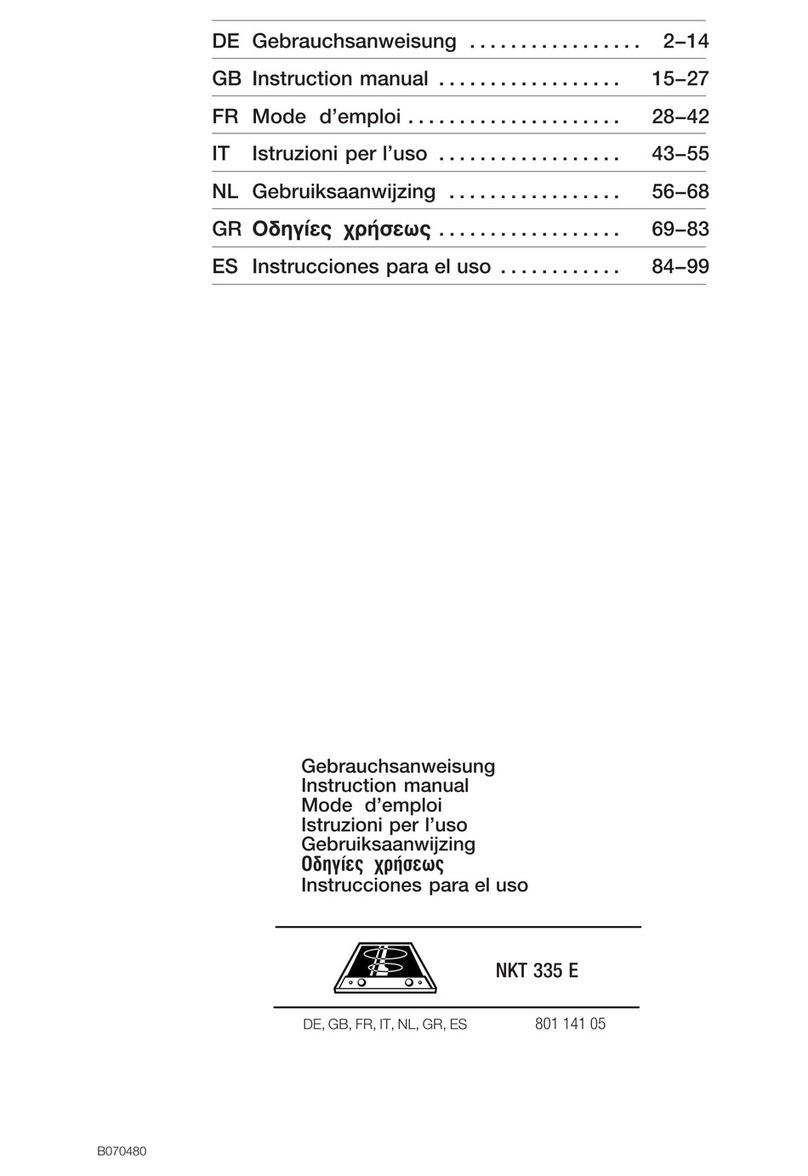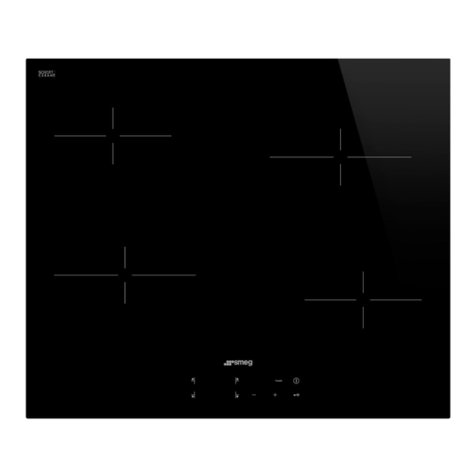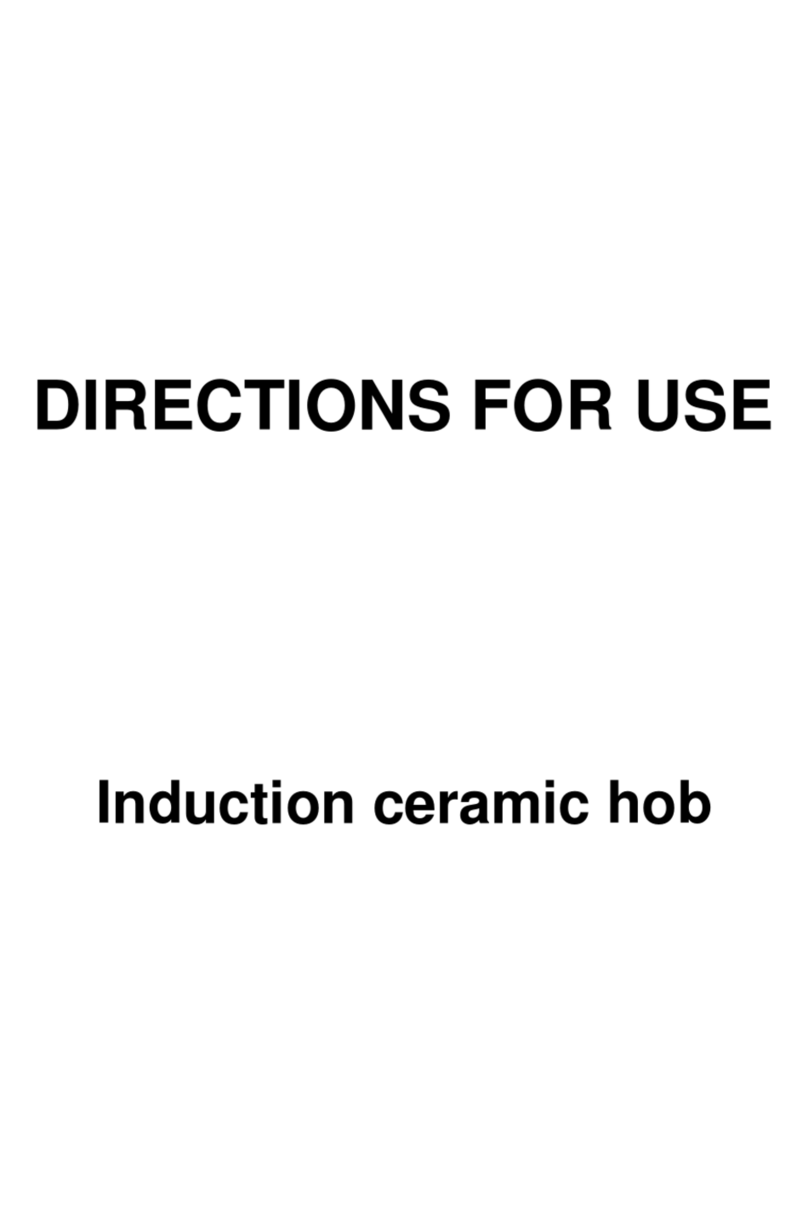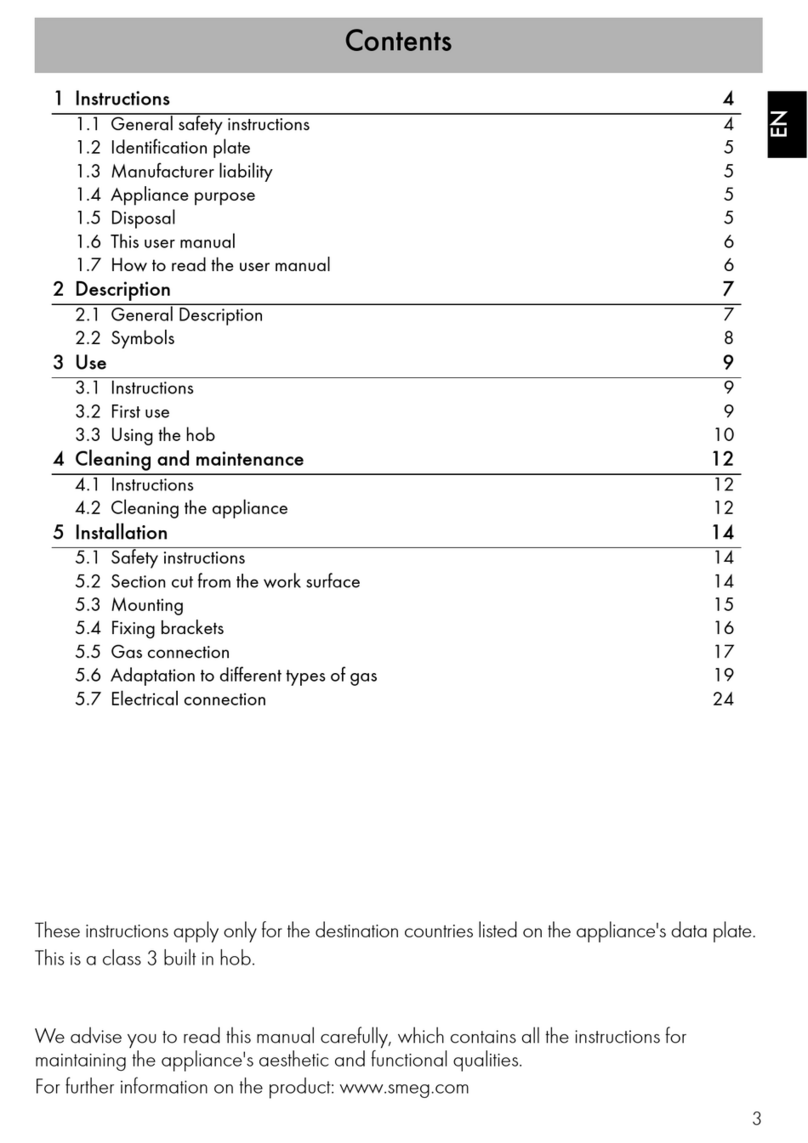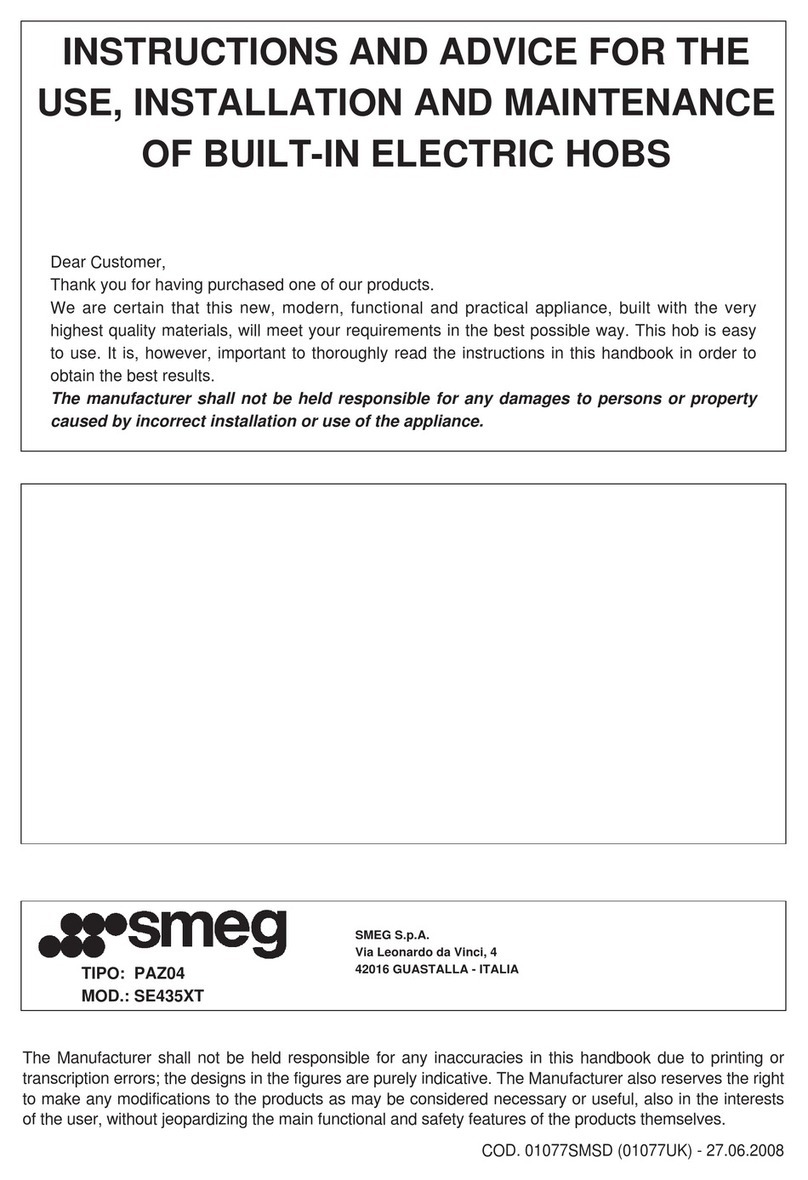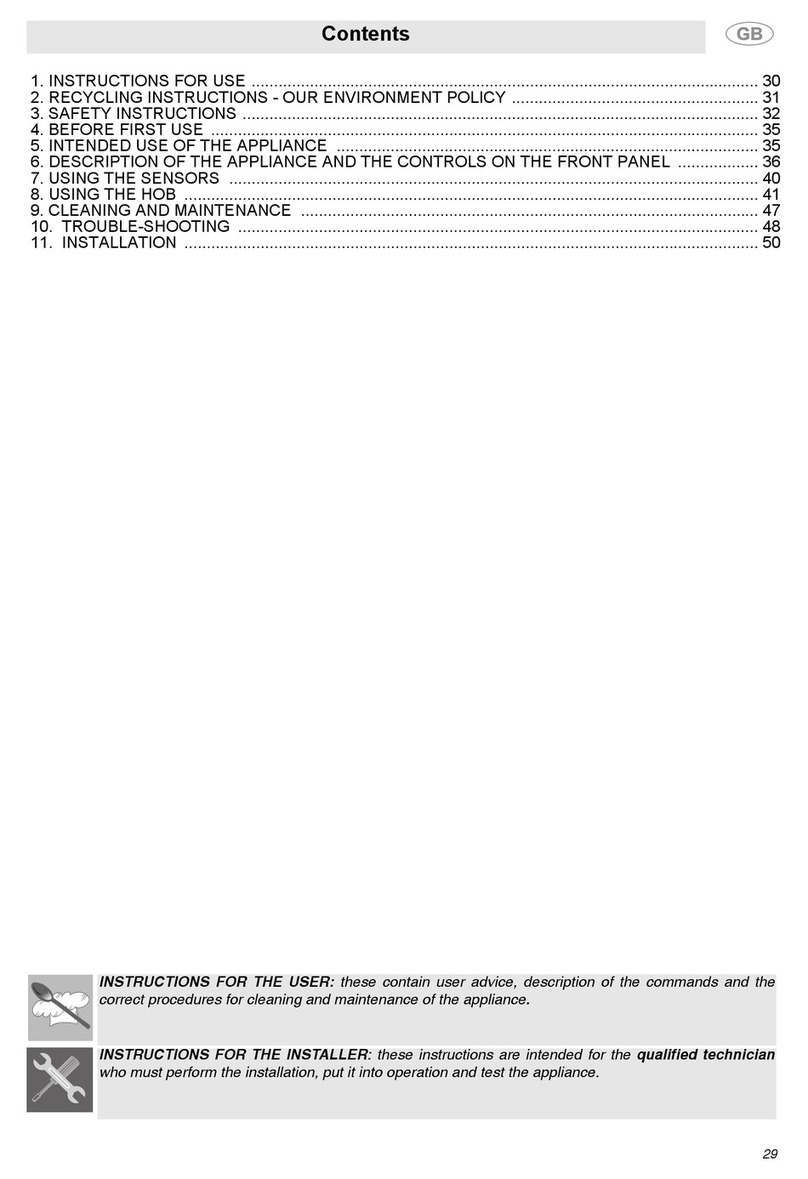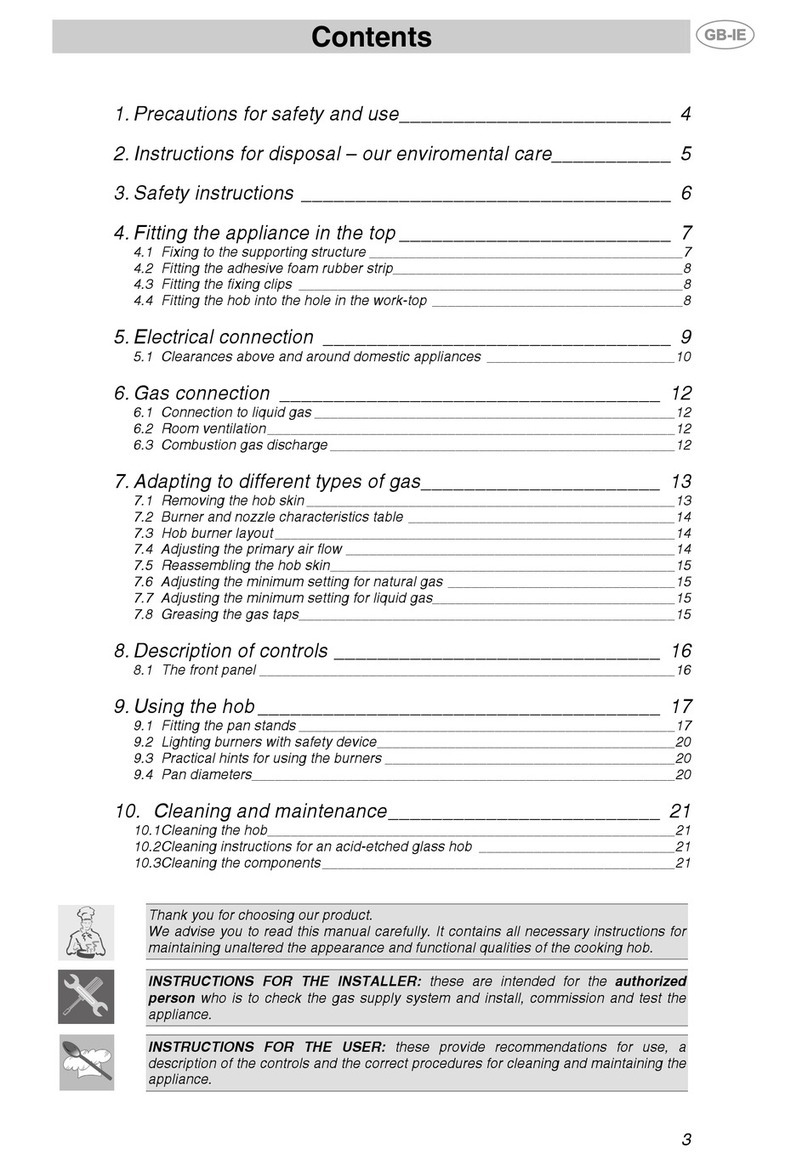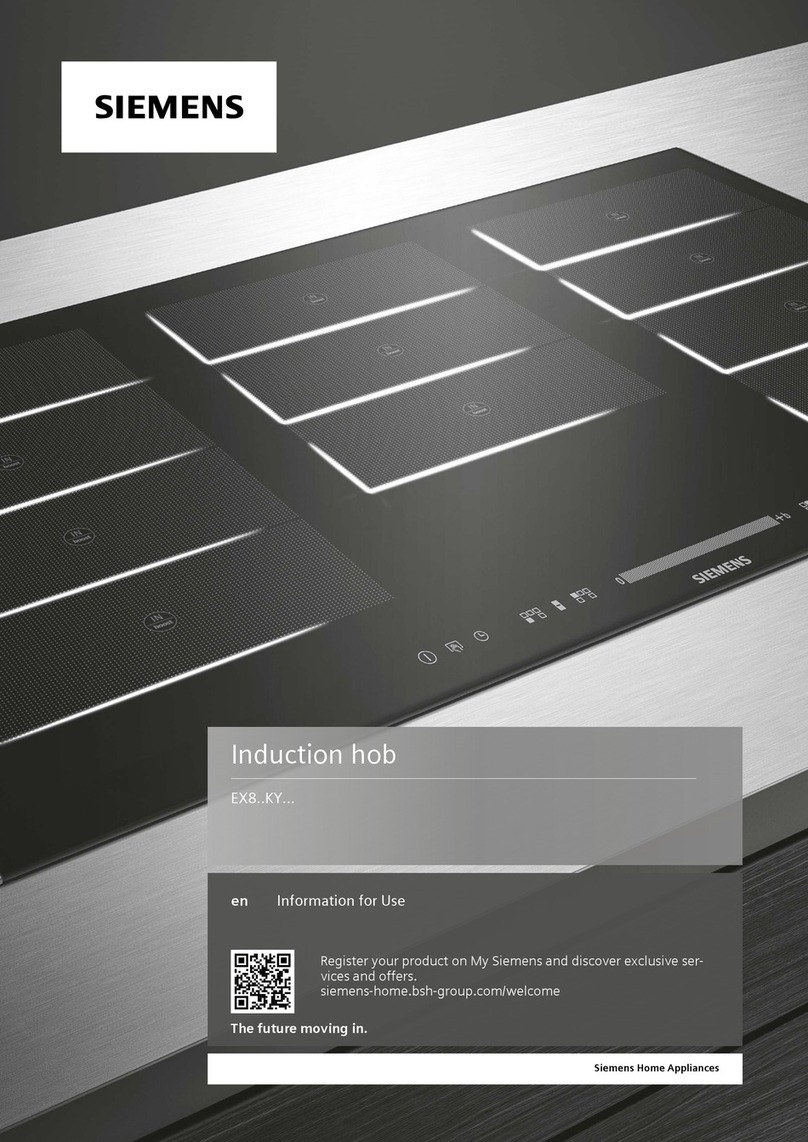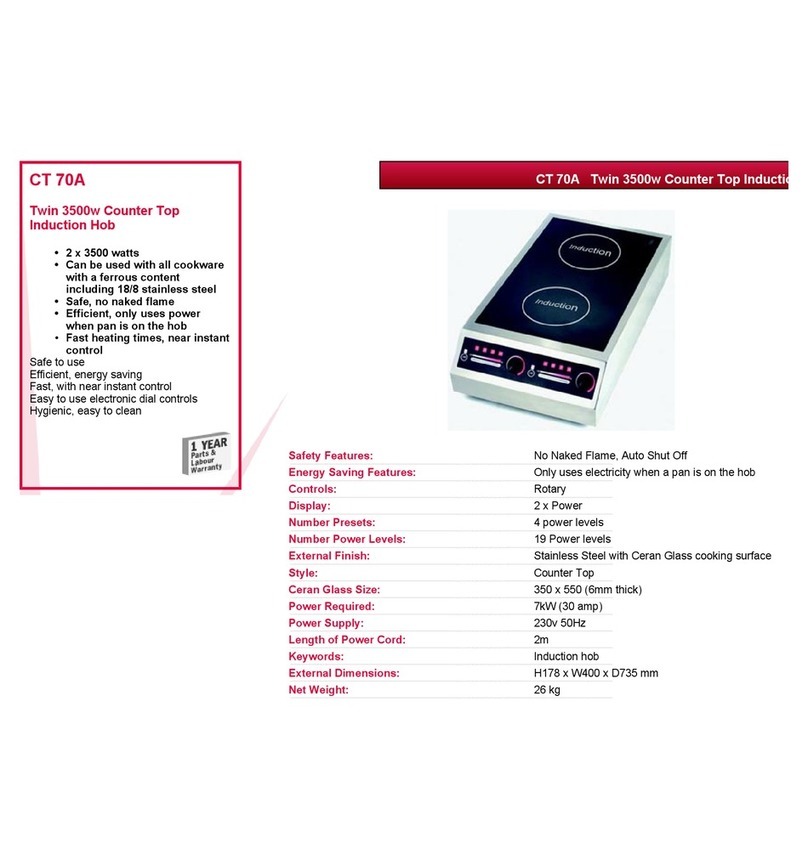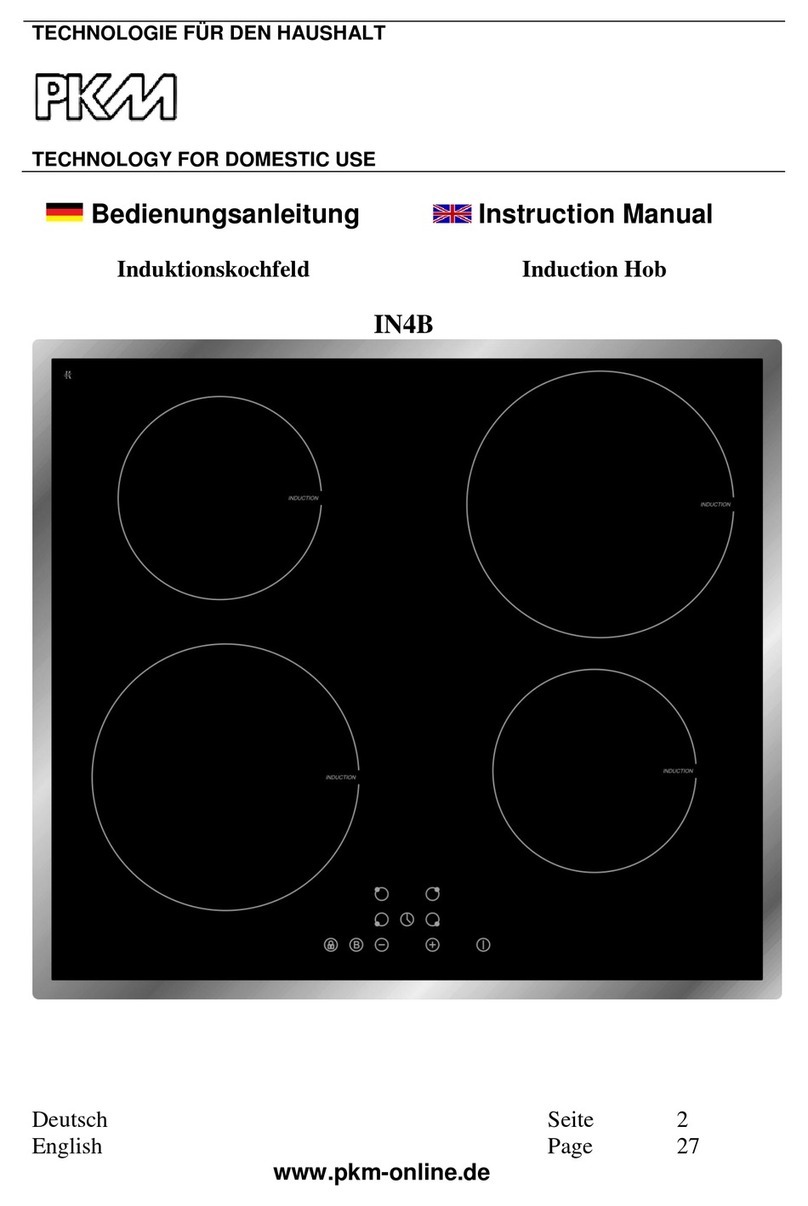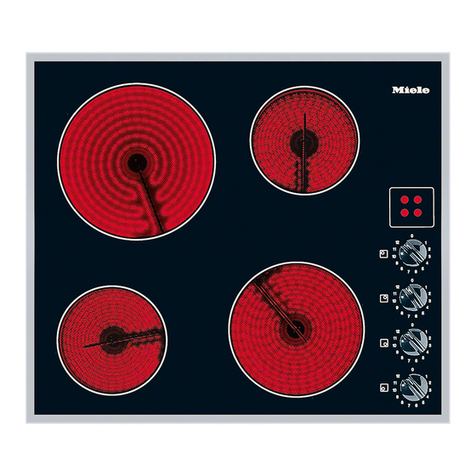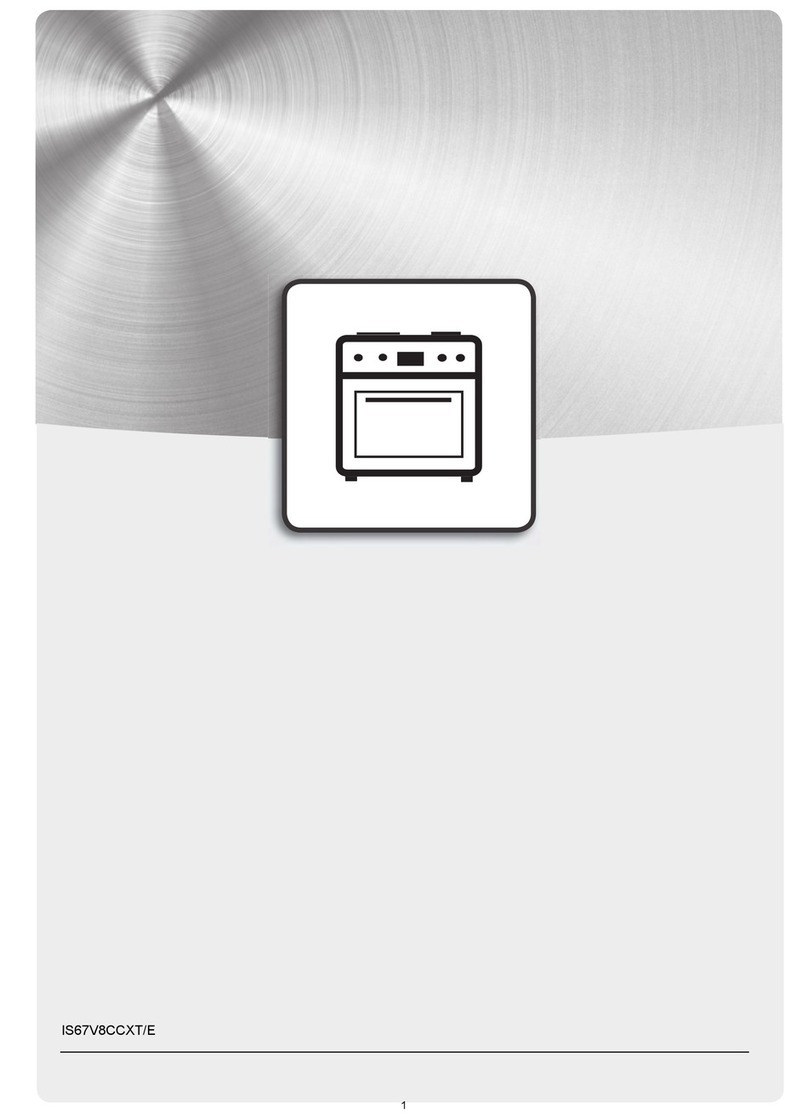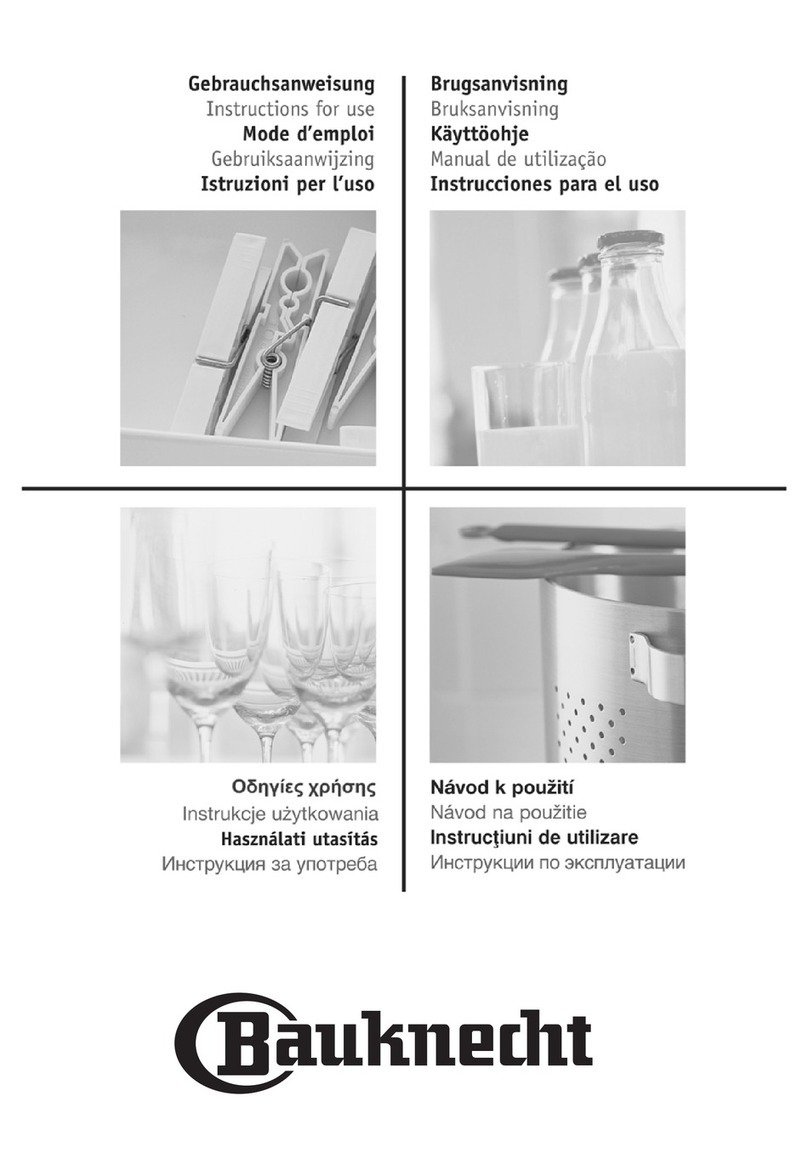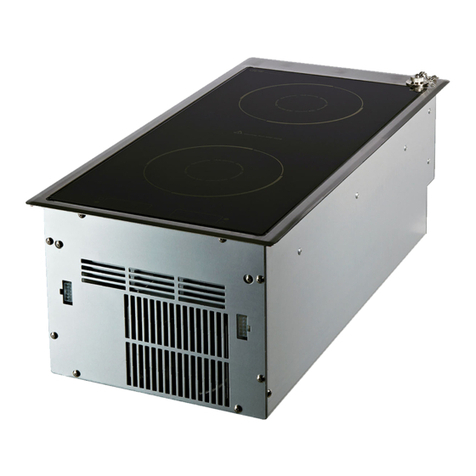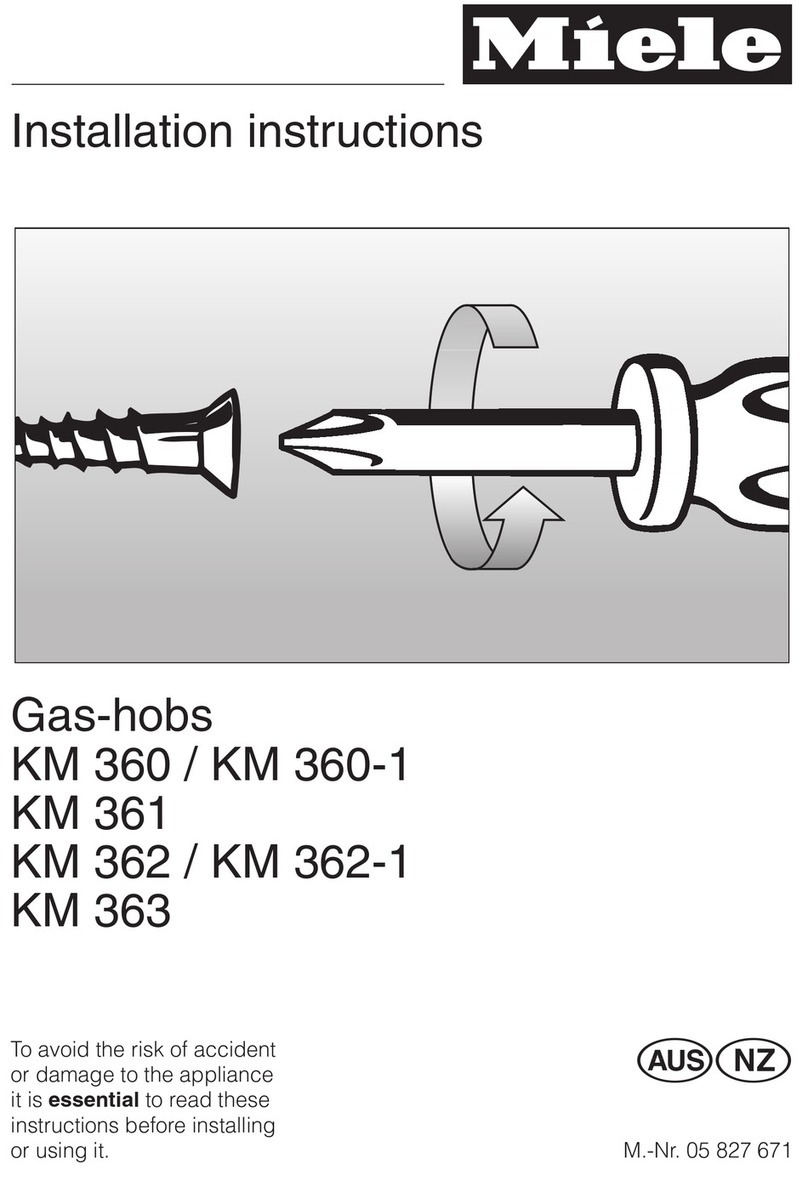
Instructions
5
ITEN
• Note carefully that ventilation
requirements indicated in the specific
model instruction booklet. This
information is vital for the safety of the
occupants of the area in which the
appliance is installed and used.
• Never check for gas leaks with a naked
flame. Always use a soapy water
solution applied with a brush to the areas
where you suspect there may be a gas
leak. Do not use the appliance if you
suspect a gas leak.
• There are no preset service intervals for
this appliance. Refer to the section on
maintenance and cleaning in the
instruction booklet for details on how to
care for your SMEG appliance.
• After removing burner caps or burner
heads to clean them or the hob surface
around the burners, always take care
that the burner heads are properly
located in position and that the igniter
post and flame failure thermocouple are
not damaged in any way. It is important
that these devices fit correctly into the
location holes provided in the burner
heads. They will not function correctly if
not properly located. The burner caps
locate by means of the ridge on the
underside. Note that burners will not
work efficiently if the burner caps are not
properly located. There are drawings of
a typical burner assembly in your
instruction booklet.
Supplied in South Africa by:
S.B.S. Household Appliances,
2985 William Nicol Drive cnr Bryanston
Drive, Bryanston, JHB
tel: (011) 463 1016
FOR YOUR SAFETY
IF YOU SMELL GAS:
• Turn off gas supply at bottle
• Extinguish all naked flames;
• Do not operate any electrical
appliances
• Ventilate the area
• Check for leaks as detailed in this
manual
If odour persists, contact your dealer or gas
supplier immediately
Do not temper with the appliance.
BURN-BACK (FIRE IN BURNER TUBE OR
CHAMBER)
In the event of a burn-back, where the flame
burns back to the jet, immediately turn off
the gas supply at the control valve on the
panel. After ensuring the flame is
extinguished, wait for I minute and re-light
the appliance in the normal manner. Should
the appliance again burn back, close the
control valve and call a service technician.
Do not use the appliance again until the
service technician has declared that it is
safe to do so.
GAS-PRESSURE REGULATOR
This appliance requires an operating
pressure of 2,8 kPa at the appliance. A
suitable LPG regulator that complies with
the requirements of SANS 1237 must be
installed.



